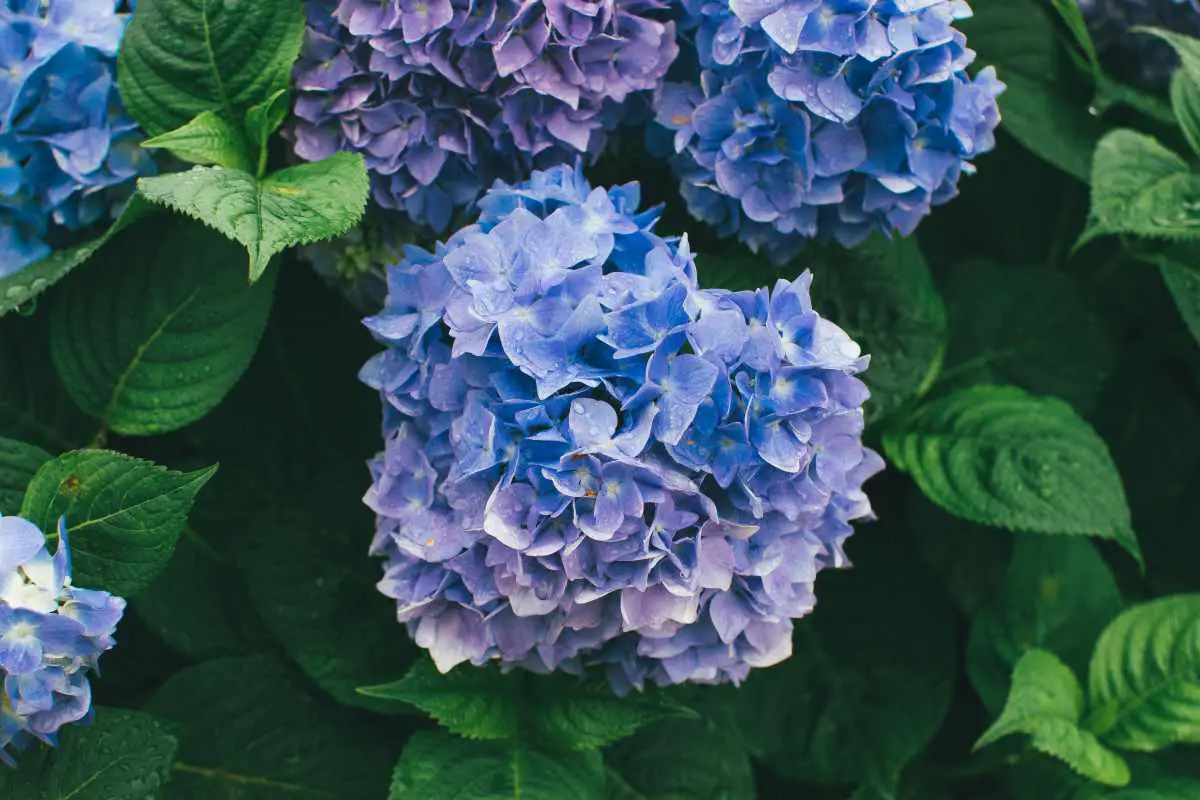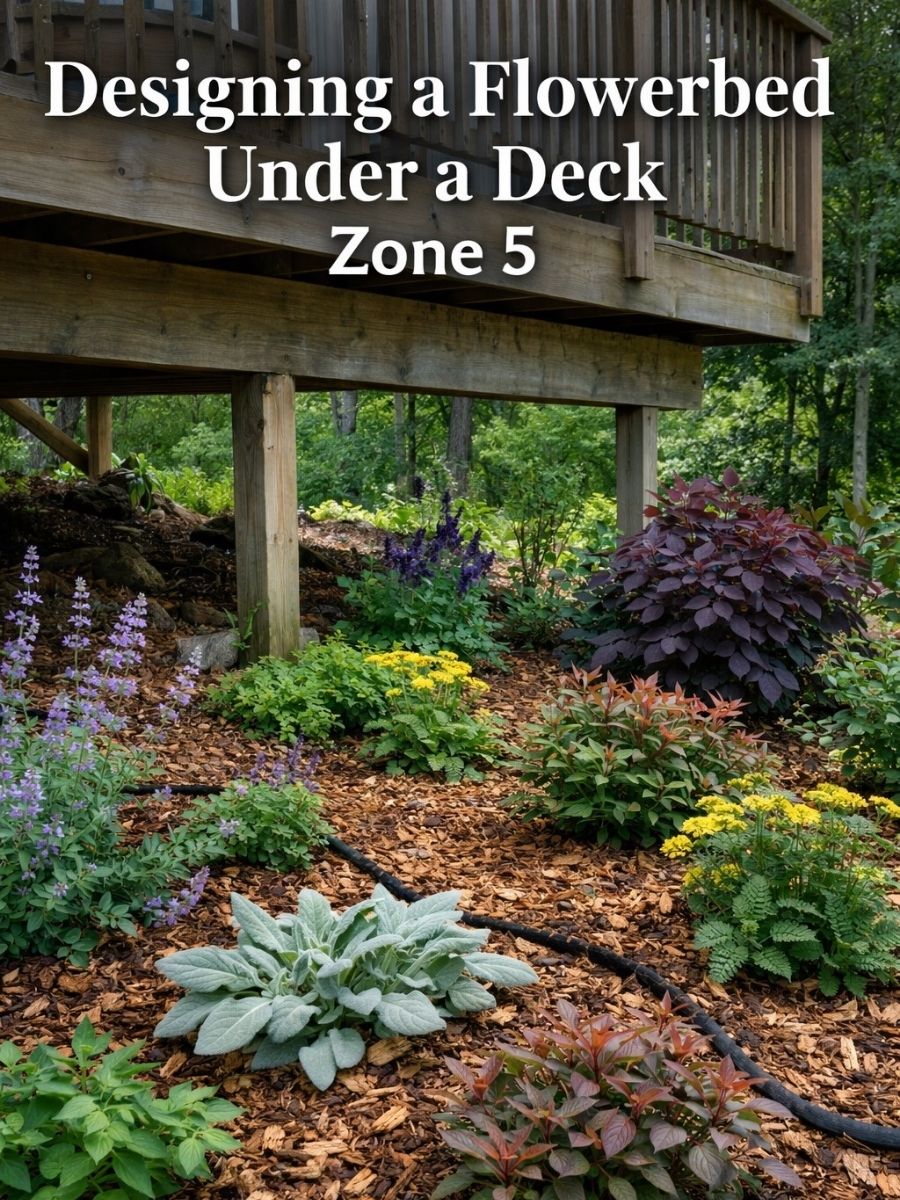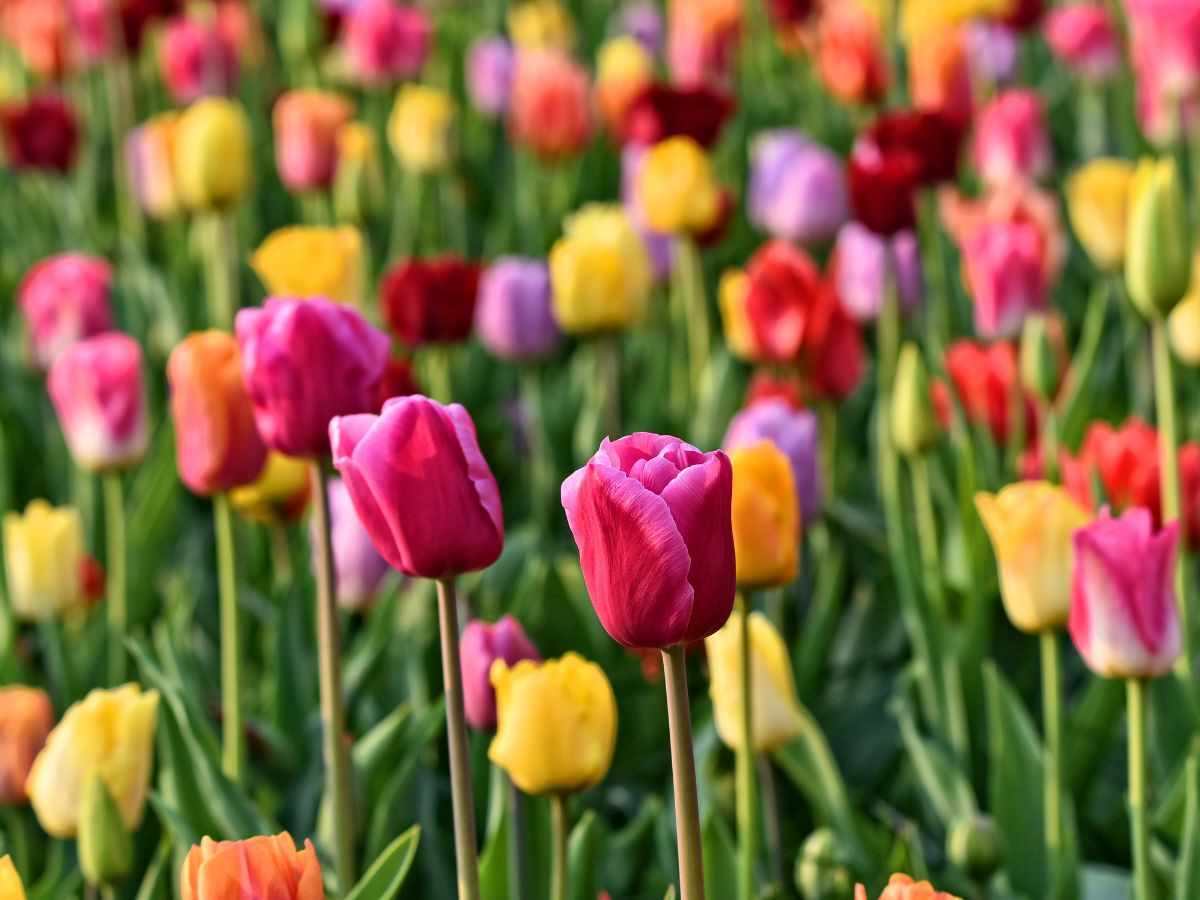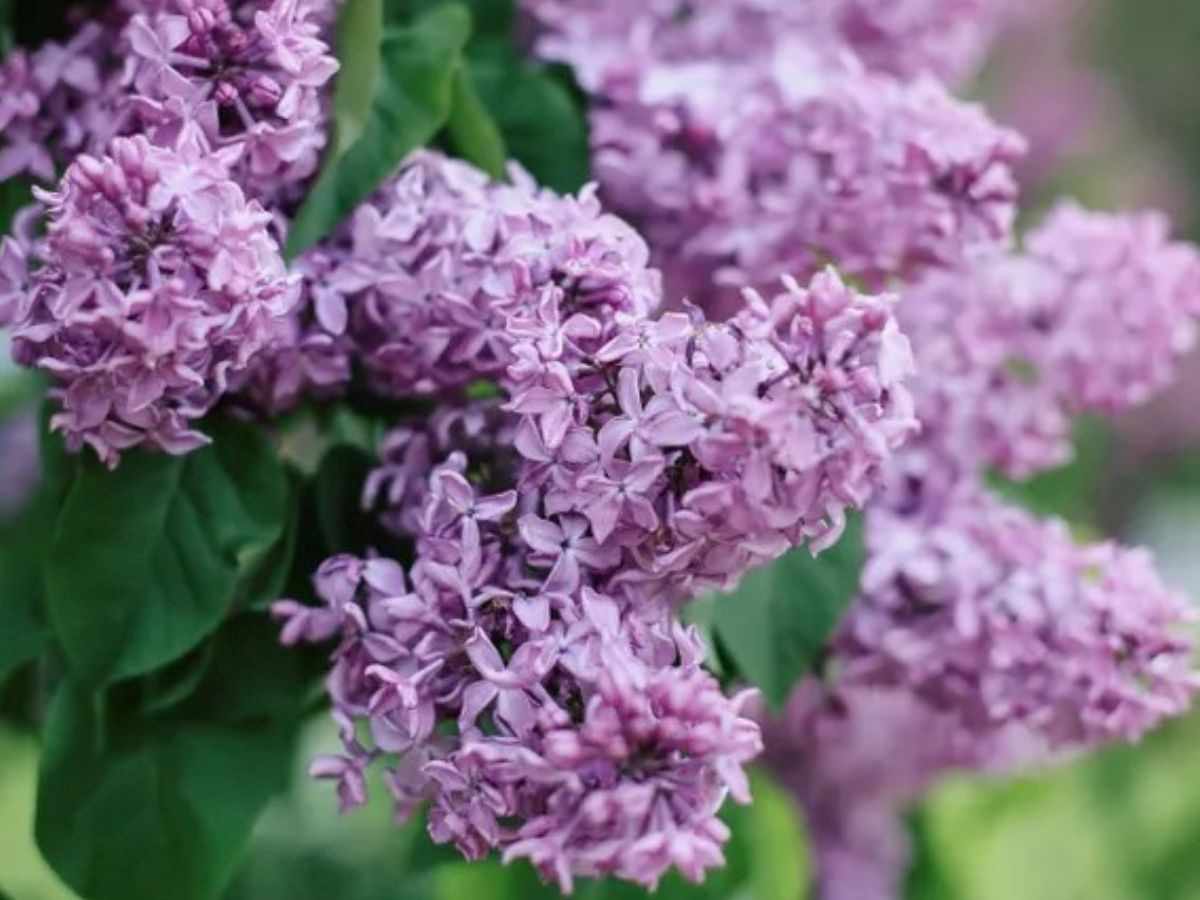If pink is not your color, you might be wondering how to make hydrangeas blue. Changing the color of hydrangea flowers can be influenced by altering the pH level of the soil they’re planted in. There are many Varieties of hydrangeas. Some of those varieties have a color that is PH dependent and some do not. Before you attempt to change the color of your hydrangea, it might be helpful to know what variety you have.
Disclosure: This post contains affiliate links. As an Amazon Associate I earn from qualifying purchases.
Hydrangea Species
There are several species of hydrangeas, each with its own unique characteristics and growing requirements. Here are some of the most commonly cultivated hydrangea species:
Hydrangea Macrophylla
Also known as bigleaf hydrangea, this species is famous for its large, showy flower heads and glossy green foliage.
Bigleaf hydrangeas are divided into two main types: mophead hydrangeas, which have rounded flower heads, and lacecap hydrangeas, which have flat-topped flower clusters with tiny flowers surrounded by larger sterile ones.
One of the most fascinating aspects of bigleaf hydrangeas is their ability to change flower color based on soil pH.
In acidic soil, the flowers tend to be blue to purple in color due to the presence of aluminum ions in the soil, which the plant absorbs and incorporates into the flower pigments.
In alkaline soil, the flowers are pink to red, as aluminum is less available to the plant. White-flowering varieties are generally unaffected by soil PH.
Bigleaf hydrangeas prefer well-drained soil rich in organic matter. They thrive in partial shade, especially in the afternoon when the sun is most intense.
Too much direct sunlight can scorch the leaves and flowers, leading to wilting and browning. Adequate moisture is essential for bigleaf hydrangeas, especially during hot, dry periods.

Hydrangea Paniculata
Panicle hydrangea is valued for its elongated, cone-shaped flower clusters that bloom in mid to late summer.
The flowers start out creamy white and gradually turn pink or even red as they age. Panicle hydrangeas are more tolerant of sun and heat compared to other hydrangea species. Their flower color is not PH dependent.
One of the reasons for the popularity of panicle hydrangeas is their adaptability to a wide range of growing conditions.
They can tolerate full sun to partial shade, although they may appreciate some afternoon shade in hot climates.
Panicle hydrangeas are also more tolerant of heat and drought compared to other hydrangea species, making them suitable for regions with challenging growing conditions.
Panicle hydrangeas prefer well-drained soil that is rich in organic matter. While they are more drought-tolerant than other hydrangeas, they still benefit from regular watering, especially during hot, dry periods.
Mulching around the base of the plant can help retain soil moisture and regulate soil temperature.
Hydrangea Arborescens
Commonly known as smooth hydrangea, this species is native to North America. It produces large, round flower clusters that bloom in summer. The most popular cultivar is ‘Annabelle’, which features large, white flower heads.
Smooth hydrangeas typically bloom in summer, starting in late June or early July and continuing into August. The flower clusters last for several weeks, providing a long-lasting display of color in the garden.
Unlike some other hydrangea species, smooth hydrangeas do not change flower color based on soil PH.
Smooth hydrangeas are adaptable plants that thrive in a wide range of growing conditions. They prefer well-drained soil that is rich in organic matter but can tolerate a variety of soil types, including clay and sandy soils.
Smooth hydrangeas perform best in partial shade, although they can tolerate full sun in cooler climates or with sufficient moisture.
While smooth hydrangeas are relatively drought-tolerant once established, they benefit from regular watering, especially during hot, dry periods. Water deeply to ensure the soil is thoroughly moistened, but avoid overwatering, as this can lead to root rot and other problems.
Hydrangea Quercifolia
Hydrangea Quercifolia or Oakleaf Hydrangea is named for its oak-like leaves, which turn burgundy in the fall. It produces cone-shaped flower clusters in summer, typically creamy white in color. Oakleaf hydrangeas are known for their attractive foliage and exfoliating bark.
Oakleaf hydrangeas bloom in early to mid-summer, typically starting in June and continuing into July. The flower clusters last for several weeks, providing a long-lasting display of color in the garden.
Unlike some other hydrangea species, oakleaf hydrangeas do not change flower color based on soil PH.
Oakleaf hydrangeas prefer moist, well-drained soil that is rich in organic matter. They perform best in partial shade, although they can tolerate full sun in cooler climates or with sufficient moisture.
Oakleaf hydrangeas are more drought-tolerant than other hydrangea species once established, making them suitable for regions with challenging growing conditions.
While oakleaf hydrangeas are relatively drought-tolerant once established, they benefit from regular watering, especially during hot, dry periods. Water deeply to ensure the soil is thoroughly moistened, but avoid overwatering, as this can lead to root rot and other problems.
Hydrangea Serrata

Similar to Hydrangea macrophylla, this species is native to Japan and Korea. It features smaller flower heads and serrated leaves.
The flowers of Hydrangea serrata are lacecap or mophead in form, depending on the variety. Lacecap varieties have flat-topped flower clusters with small fertile flowers in the center surrounded by larger sterile ones, while mophead varieties have dense, rounded flower clusters composed entirely of sterile flowers.
Mountain hydrangeas typically bloom in early to mid-summer, with flower clusters appearing from late May to July. The flowers can last for several weeks, providing a long-lasting display of color in the garden. Depending on the variety, the flower color can range from blue to pink or even white.
Hydrangea serrata thrives in well-drained soil that is rich in organic matter. It prefers partial shade, especially in the afternoon when the sun is most intense.
Mountain hydrangeas are more tolerant of sun and heat compared to some other hydrangea species, making them suitable for a wider range of growing conditions. They also prefer slightly acidic to neutral soil pH for optimal growth and flower color development.
While mountain hydrangeas are relatively drought-tolerant once established, they benefit from regular watering, especially during hot, dry periods. Water deeply to ensure the soil is thoroughly moistened, but avoid overwatering, as this can lead to root rot and other problems.
Hydrangea Anomala subs. Petiolaris
Also known as climbing hydrangea, this species is a vigorous, woody vine that climbs by producing aerial rootlets. It can reach impressive heights of up to 50 feet (15 meters) or more under the right growing conditions.
It features large, flat-topped flower clusters in summer and glossy green foliage that turns yellow in the fall. The plant’s ability to climb makes it an excellent choice for covering unsightly structures or adding vertical interest to the garden.
The flowers on climbing hydrangeas is not PH dependent.
Climbing hydrangea produces large, flat-topped flower clusters in early to mid-summer, typically starting in June. The individual flowers are small and creamy white in color, creating a striking contrast against the dark green foliage. The flower clusters persist for several weeks, adding beauty and charm to the garden.
Climbing hydrangea thrives in well-drained soil that is rich in organic matter. It prefers partial to full shade, although it can tolerate some morning sun or dappled sunlight. Climbing hydrangea is relatively adaptable and can grow in a variety of soil types, including clay and sandy soils.
While climbing hydrangea is relatively drought-tolerant once established, it benefits from regular watering, especially during hot, dry periods. Water deeply to ensure the soil is thoroughly moistened, but avoid overwatering, as this can lead to root rot and other problems.
How To Make Hydrangea Blue
Not all hydrangea varieties will turn blue even in acidic soil, as some are genetically predisposed to produce pink or white flowers regardless of soil PH. As long as you have the right variety of hydrangea, you will be able to change its flower color using these techniques.

Testing The Soil PH
Before you attempt to change the color of your hydrangea flowers, it is essential to test the soil PH. You can either do this at home using a soil PH meter or a PH testing kit, or you can send a sample of your soil to be tested by your local extension office.
A soil PH that is below 7 is acidic, above 7 is alkaline, and 7 is neutral.
Acidifying The Soil
Hydrangeas tend to produce blue flowers in acidic soil with a pH between 5.0 and 5.5. You can acidify the soil by adding substances like aluminum sulfate, sulfur, or peat moss. Follow the instructions on the product label for the correct application rates.
Aluminum sulfate is a non organic matter. It is chemically produced through a reaction of aluminum hydroxide and sulfuric acid according to the U.S Environmental Protection Agency. If you are an organic gardener, choose sulfur or peat moss to acidify your soil.
sulfur and peat moss are both naturally occurring. Peat forms when plant material does not fully decay in acidic and anaerobic conditions. While sulfur is an element that is present in the soil.
Mix the recommended amount of aluminum sulfate, sulfur, or peat moss into the soil around the base of the plant. Repeat this application every few weeks during the growing season as needed.

You may have to apply a soil acidifier once or twice per year depending on your soil PH.
Regularly test the pH of the soil. Having a PH meter or a soil PH testing kit makes it more accessible to you to keep track of your soil PH levels.
Monitoring the acidity levels allows you to make adjustments as necessary to maintain the desired pH for blue hydrangea flowers.
Remember that it may take some time for the changes in soil pH to reflect in the flower color, as hydrangeas generally take a few weeks to respond to changes in soil conditions.
Hydrangea Varieties That Can Turn Blue
Several varieties of hydrangeas have the ability to change flower color to blue under the right conditions, specifically acidic soil with a pH level between 5.0 and 5.5. Here are some popular hydrangea varieties known for their ability to produce blue flowers:
Hydrangea Macrophylla ‘Nikko Blue’
This cultivar is one of the most well-known for its intense blue flower clusters. It is a mophead hydrangea that thrives in acidic soil and provides a stunning display of blue blooms.
Hydrangea Macrophylla ‘Endless Summer’
‘Endless Summer’ is a mophead hydrangea cultivar that blooms on both old and new wood, allowing for continuous blooms throughout the summer. It comes in blue, pink, or purple flower clusters, depending on soil PH.
Hydrangea Macrophylla ‘Twist-n-Shout’
This cultivar is part of the Endless Summer series and features lacecap flowers that can turn blue in acidic soil. It blooms on both old and new wood.
Hydrangea Macrophylla ‘Blue Billow’
Another mophead hydrangea cultivar, ‘Blue Billow’ produces large, rounded flower clusters that can range from blue to purple in acidic soil.
Hydrangea Macrophylla ‘Forever & Ever Blue Heaven’
This cultivar is known for its blue mophead flowers that appear in acidic soil. It is part of the Forever & Ever series, which includes other varieties with different flower colors.
Hydrangea Serrata ‘Bluebird’
This lacecap hydrangea produces blue or pink flower clusters depending on soil PH. It is a compact shrub that is well-suited for smaller gardens or containers.
Hydrangea Serrata ‘Blue Deckle’
Another lacecap hydrangea, ‘Blue Deckle’ features blue or pink flowers and attractive serrated leaves. It is valued for its compact growth habit and long-lasting blooms.
Hydrangea Macrophylla ‘Blue Enchantress’
This mophead hydrangea cultivar produces vivid blue flowers in acidic soil. It is part of the Enchantress series, which includes other varieties with different flower colors.
These are just a few examples of hydrangea varieties that can produce blue flowers under the right conditions. Remember that soil pH plays a crucial role in determining flower color, so it’s essential to test the soil and make any necessary amendments to achieve the desired blue hue.
Pin This Post!

More Gardening and Recipe Related Topics
Gardening
Recipes
Rustic Swiss Chard Tart – Gluten Free
Shop This Post
Tell Us What You Think!
Turning hydrangeas blue involves adjusting the soil pH to make it more acidic, which enhances the plant’s ability to absorb aluminum from the soil.
Aluminum is naturally present in many soils but becomes more available to the plant in acidic conditions. When hydrangeas absorb aluminum, it affects the color of their flowers, causing them to turn blue.
To achieve this, gardeners can amend the soil with acidic materials such as aluminum sulfate, sulfur, or peat moss. Regular applications of these amendments can gradually lower the soil pH, leading to vibrant blue blooms in hydrangea varieties that are capable of producing blue flowers.
Proper soil testing and monitoring are essential to ensure the pH levels are within the optimal range for blue coloration.
Have you successfully turned your hydrangea blooms blue? Let us know if you have any comments or questions down in the comment section below.





Be the first to reply